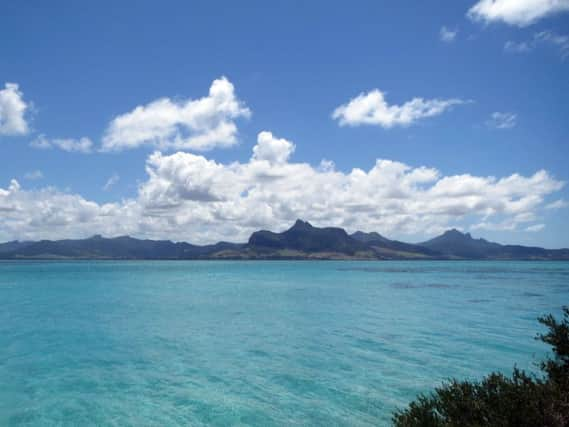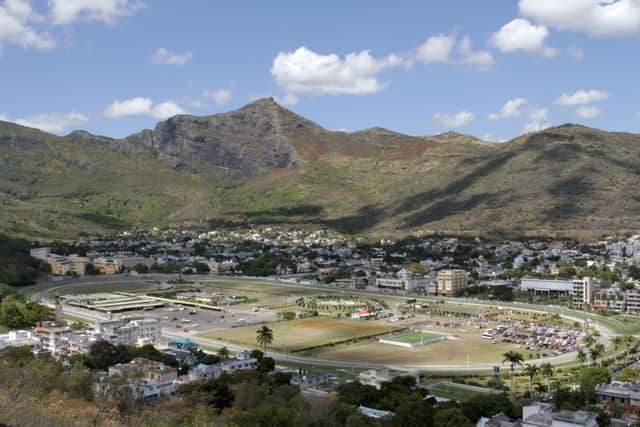Travel review: Mauritius - Ocean’s seventh heaven


The ill-fated dodo once roamed here, and now a team of dedicated conservationists is working hard to prevent more endangered flora and fauna from following in its footsteps. Rare giant tortoises, bats and rodents are now thriving on this perfectly round islet, just 27 hectares in size.
Shaded by resurgent ebony trees, once-threatened creatures, including the pink pigeon and Telfair’s skink, are multiplying in numbers, and tourists can now go to the island to catch a glimpse of them.
Advertisement
Hide AdAdvertisement
Hide AdMost visitors to Mauritius are understandably drawn to its stunning beaches, luxurious accommodation and glorious weather, but this tropical utopia has so much to offer.


Ile aux Aigrettes is a jewel in the crown of the Mauritian Wildlife Foundation (MWF). Since 1987, the non-governmental organisation has been concentrating on returning the island to the “natural museum” of endemic species of animals and plants that it was before humans disturbed the delicate ecosystem more than 400 years ago.
I take an ecotour of the islet with a trained ranger, which lasts around two hours at a relaxed pace. The walk is perfect for nature enthusiasts, birdwatchers and photographers of every level.
Within minutes, we encounter one of the island’s celebrities – an Aldabra giant tortoise affectionately called Big Daddy. He is one of around 20 of the species here and he lives up to his name – he is huge, and unquestionably the boss of the community.
Advertisement
Hide AdAdvertisement
Hide AdThe MWF released 20 Aldabra tortoises on Ile aux Aigrettes in 2000. By 2004, they were allowed to roam completely free. The aim was that the tortoises would eat the ebony fruit and disperse the seeds around the island in their droppings, naturally encouraging growth of the rare trees.
My guide says the strategy has been a success, not just because ebony trees are being spread across the island, but also that they have been found to germinate more successfully, because they have passed through the tortoises’ droppings.
The MWF works closely with local and international partners – including Chester Zoo in the UK – with the long-term aim of recreating lost ecosystems by saving some of the rarest species from extinction and restoring the native forest.
I find the experience to be both fascinating and exhilarating, and it’s comforting to know that by visiting the island, I am contributing towards this special project.
Advertisement
Hide AdAdvertisement
Hide AdThe hotel where I am staying, The Residence, has a partnership with the MWF in which guests are able to make donations to the charity. Regular tours are arranged, and it takes just 45 minutes to reach the coralline limestone haven.
Once I return to The Residence, which is inspired by turn-of-the-century plantation houses, I can be as adventurous or as lazy as I please. From windsurfing to water skiing, the hotel has all kinds of complimentary water sports for when you want a change of scenery from its pristine secluded beach.
In just one minute’s speedboat ride from the shore, I arrive at the coral reef which stretches along this part of the east coast of Mauritius. The water may only be two or three metres deep, but the marine life is breathtaking. As soon as I take the plunge into the waters kept calm by the reef, I encounter butterflyfish, Moorish idols and bluestripe snappers, as well as all sorts of coral species.
Other free activities organised by the hotel include canoeing, glass bottom boat trips, tennis and volleyball, while scuba diving, deep sea fishing, horse riding and catamaran cruises are available at an extra cost.
Advertisement
Hide AdAdvertisement
Hide AdFor children, The Residence has The Planter’s Kids Club, where youngsters can be looked after from 9am to 10pm. Experienced staff members supervise activities including treasure hunts, snorkelling classes, sports competitions, body painting, hiking and picnics.
While the kids are being taken care of, the perfect escape for mums and dads is the Sanctuary Spa. With 11 treatment rooms – one of which is set in the hotel’s tropical gardens overlooking the sea – the spa offers all kinds of therapies.
While many visitors to Mauritius choose to stay away from the capital, Port Louis, I am keen to go on a day trip. I travel with one of The Residence’s drivers in a 4x4 across the island, through sleepy villages and field after field of sugar cane plantations – one of the main exports here. After just 45 minutes, we arrive in a bustling melting pot of cultures.
To get a feel for the historic city and for one of the best views, it is well worth trekking up to the citadel. From there, you can see the famous racecourse of Port Louis and the docks from where huge amounts of sugar and fish are shipped around the world each year.
Advertisement
Hide AdAdvertisement
Hide AdDuring my trip to Mauritius, I find that with a small amount of adventurous spirit, you can encounter rare and stunning animals, learn about conservation projects and hike in pristine nature reserves – if you can peel yourself away from the beach.
• James Edgar was a guest of The Residence Mauritius (cenizaro.com/theresidence/Mauritius) which offers rooms from £143 per night on a half-board basis.
Air Mauritius flies up to four times a week direct from London Heathrow to Mauritius. Prices start at £700 for a return economy class flight (www.airmauritius.com).
Visit www.mauritian-wildlife.org and www.ile-aux-aigrettes.com for further information.